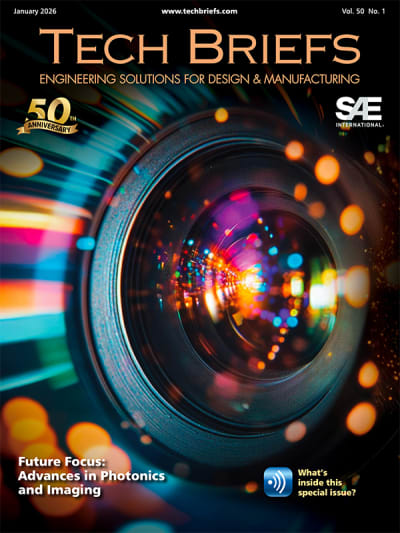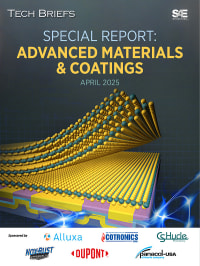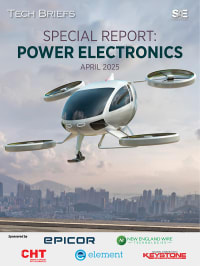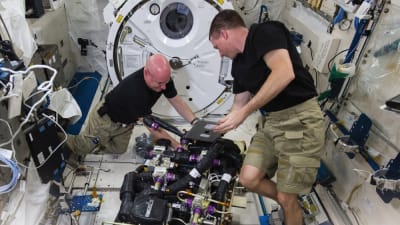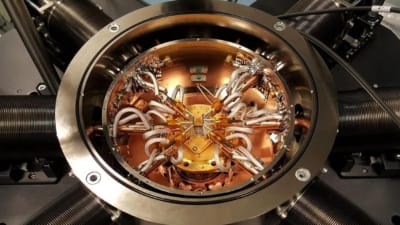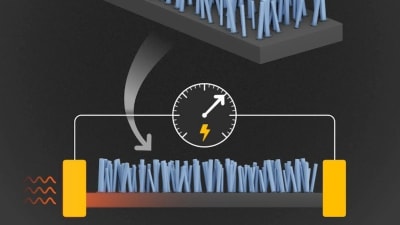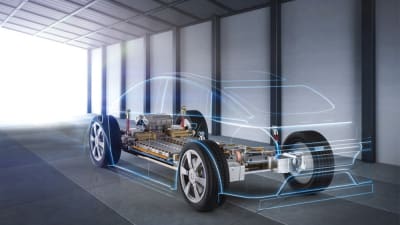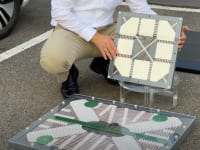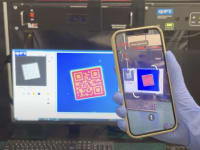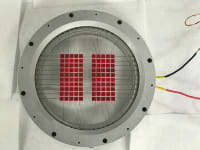Stories
44
23
61
0
0
30
Briefs: Energy
Scientists from Nagoya University in Japan have developed an innovative cooling device — an ultra-thin loop heat pipe — that significantly improves heat control for electronic components in smartphones and tablets. Read on to learn more.
INSIDER: Design
In the quest for energy independence, researchers have studied solar thermoelectric generators (STEGs) as a promising source of solar electricity generation. Unlike the...
Special Reports: Electronics & Computers
Rugged/Hi‐Rel Electronics - June 2025
How advanced packaging is transforming mission‐critical electronics…a new era of high‐speed data transmission in defense…fully rugged PCs provide a decisive edge on the battlefield. Read about...Special Reports: Materials
Advanced Materials & Coatings - April 2025
In this compendium of articles from the editors of Tech Briefs and Aerospace & Defense Technology, learn how breakthroughs in materials science are enabling exciting new applications in...Special Reports: Electronics & Computers
Power Electronics - April 2025
This compendium of articles from the editors of Tech Briefs and Aerospace & Defense Technology magazines looks at the latest advances in power electronics and energy storage for applications ranging from...Articles: Power
Along with rapid innovation in cooling methods, a major trend in EV thermal management is the use of technology to better design more thermally efficient vehicle architectures. AI and digital technologies have been major boons to the engineering toolkit for better design, helping to radically speed up system testing and development. Read on to learn more.
Blog: Energy
Research reports that MXenes, a class of 2D materials originally discovered at Drexel University in 2011, demonstrate the rare combination of high electrical conductivity and low thermal conductivity.
Articles: Energy
Engineers at NASA used modeling and simulation with experimental testing to analyze the next generation of compressor designs that get the job done more quietly, with fewer maintenance needs, and at lower fabrication cost. Read on to learn more.
INSIDER: Materials
Physicists at the University of Cambridge Cavendish Laboratory have discovered two new ways to improve organic semiconductors by removing more electrons from the...
Articles: Power
In this article, we'll discuss how modeling and simulation can be used to facilitate the design of thermal management systems for EV batteries – from the cell scale up. Read on to learn more.
Blog: Energy
My opinion: I take a look at some cases where it makes sense to use non-battery methods to store energy.
Products: Manufacturing & Prototyping
See the new products, including Nexperia's latest Energy Balance Calculator, StoreDot's new I-BEAM XFCTM concept, Bourns Inc.'s latest miniature resettable thermal cutoff device series, Rohde & Schwarz's wireless battery management system technology, Weidmuller USA's rugged battery connectors, Littelfuse Inc.'s overtemperature detection platform, and more.
Articles: Energy
Affordable thermal storage could help industries and cities capture heat that is currently wasted, as well as balance the inconsistencies in wind and solar power output. But while Polar Night Energy is eager to work directly with potential customers, they realize that the challenges ahead are too big for them to tackle alone.
Blog: Energy
My opinion: We need a holistic approach to energy storage — we should start with the general category and then analyze the pros and cons of different technologies to solve different problems.
Briefs: Materials
Researchers have developed a sensor that, similar to human skin, can sense temperature variation that originates from the touch of a warm object as well as the heat from solar radiation. The sensor combines pyroelectric and thermoelectric effects with a nano-optical phenomenon.
Briefs: Energy
Combination of Stressors Key to Testing Perovskite Solar Cells
Solar cells must endure a set of harsh conditions — often with variable combinations of changing stress factors — to judge their stability, but most researchers conduct these tests indoors with a few fixed stressing conditions.
Special Reports: Unmanned Systems
Simulation & Digital Twins - March 2024
In this compendium of articles from the editors of Tech Briefs and Aerospace & Defense Technology, discover how new digital tools are advancing product design in the aviation, automotive, and power...Briefs: Semiconductors & ICs
This advancement, one of the first of its kind, enables a useful new capability for a variety of applications, including improved prostheses, haptics for new modalities in augmented reality (AR), and thermally modulated therapeutics for applications such as pain management. The technology also has a variety of potential industrial and research applications.
Briefs: Energy
A research team has developed a robotic system that can be unobtrusively built into the frame of a standard honeybee hive. Composed of an array of thermal sensors and actuators, the system measures and modulates honeybee behavior through localized temperature variations.
Briefs: Energy
A collaborative research team has achieved a groundbreaking milestone in battery technology. Their remarkable achievement in developing a non-flammable gel polymer electrolyte is set to revolutionize the safety of Li-ion batteries by mitigating the risks of thermal runaway and fire incidents.
Special Reports: Power
EV Battery Innovation - November 2023
Read about the latest advances in EV battery testing, fast-charging, materials technology, and much more in this new report brought to you by Battery & Electrification Technology and Automotive...Briefs: Materials
Innovators at NASA Johnson Space Center have developed a carbon fiber reinforced polymer (CFRP) sleeve, that, when fitted over a cylindrical Li-ion battery cell, can prevent cell-to-cell propagation by containing a thermal runaway (TR) event to the originating cell.
Briefs: Materials
Thermoelectric Cooler Improves Cooling Power and Efficiency
A new thermoelectric cooler developed by Penn State scientists greatly improves the cooling power and efficiency compared to current commercial thermoelectric units and may help control heat in future high-power electronics, the researchers said.
INSIDER: Energy
Battery safety and performance in electronic devices and systems like battery thermal management, space conditioning, vehicle thermal comfort, and thermal energy...
Briefs: Manufacturing & Prototyping
Researchers have fabricated a novel device that could dramatically boost the conversion of heat into electricity. If perfected, the technology could help recoup some of the recoverable heat energy that is wasted in the U.S. at a rate of about $100 billion each year.
Briefs: Manufacturing & Prototyping
A Penn State-led team of researchers have created a new process to fabricate large perovskite devices that is more cost- and time-effective than previously possible — and may accelerate future materials discovery.
Articles: Power
Whether you call them packs, boxes, or trays, the structures that envelop and protect EV battery cells and their supporting electrical and thermal-management hardware are among the industry's top subsystem priorities.
Special Reports: Power
Automotive Test & Simulation - May 2023
In this compendium of articles from the editors of Automotive Engineering and Tech Briefs magazines, learn about the latest simulation and test technologies for ADAS, autonomous vehicles, EV batteries,...Top Stories
Blog: Manufacturing & Prototyping
2025 Holiday Gift Guide for Engineers: Tech, Tools, and Gadgets
INSIDER: Research Lab
Scientists Create Superconducting Semiconductor Material
Blog: Software
Quiz: Materials
Blog: Aerospace
Tech Briefs Wrapped 2025: Top 10 Technology Stories
Blog: Manufacturing & Prototyping
Webcasts
 Upcoming Webinars: AR/AI
Upcoming Webinars: AR/AI
The Real Impact of AR and AI in the Industrial Equipment Industry
 Upcoming Webinars: Motion Control
Upcoming Webinars: Motion Control
Next-Generation Linear and Rotary Stages: When Ultra Precision...
 Upcoming Webinars: Energy
Upcoming Webinars: Energy
Hydrogen Engines Are Heating Up for Heavy Duty
 Podcasts: Medical
Podcasts: Medical
How Wearables Are Enhancing Smart Drug Delivery
 Podcasts: Power
Podcasts: Power
SAE Automotive Podcast: Solid-State Batteries
